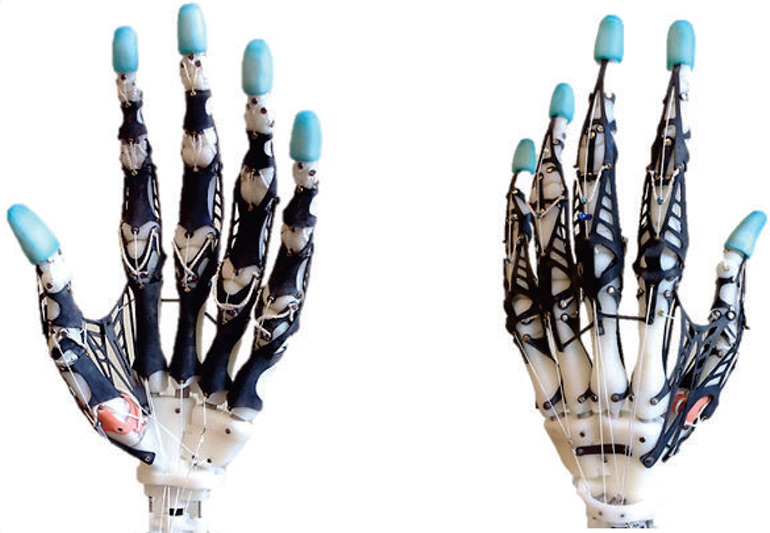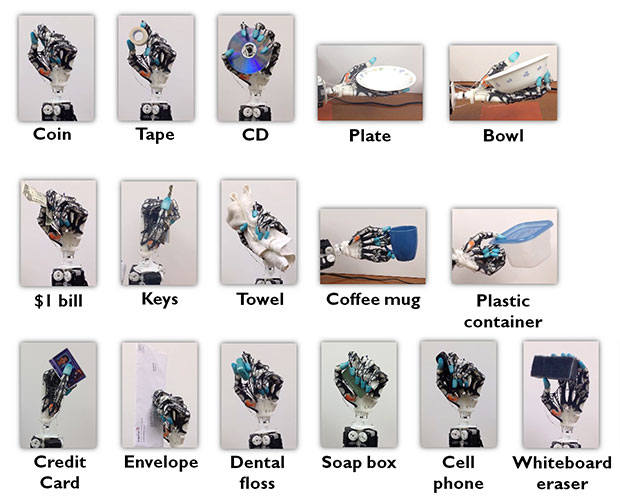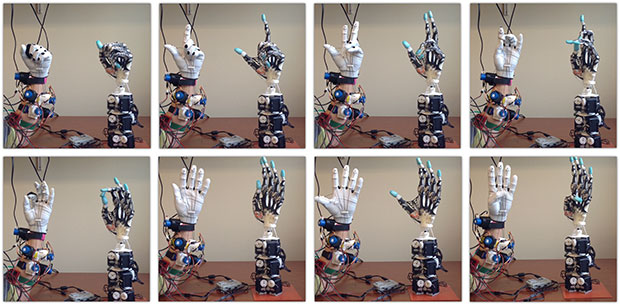There are now countless versions of 3D printed prosthetics out in the world, so many so that we come across new ones every day. Just yesterday, one solid Metal Gear Solid fan even had his own 3D printed prosthetic developed, modeled after the game. Now, two researchers from University of Washington, Zhe Xu and Emanuel Todorove, have directed their focus on the biomimetic functioning of the human hand, creating what could be the most “human” anthropomorphic robotic hand ever created. Before constructing the robotic hand, the duo started with a laser-scanned human skeleton hand. Xu and Todorove then 3D printed artificial bones that were modeled after the scan, which enabled them to duplicate the complex unfixed joints we have in our hands.
“We 3D print artificial bones from the laser-scanned model of a cadaver skeleton hand and connect them with artificial finger joints whose range of motion, stiffness, and dynamic behaviors are very close to their human counterparts,” said Zhe Xu. “Our robotic hand design uniquely preserves the important biomechanical information of the human hand on anatomical level.”
In addition to the 3D printed artificial bones, the researchers created joint ligaments, extensor, and flexor tendons for the hand with Spectra string, which is a lightweight and high-strength fiber-based gel, and replicated soft issue with laser-cut rubber sheets. The final piece added the biomimetic hand were the ‘muscles’ which were replicated by the cables of 10 Dynamixel servos, which are capable of replicating the carpal tunnel of the human hand.
What’s amazing about this anthropomorphic robotic hand isn’t just that it’s built like an actual human hand, but it operates as one as well. This precise biomechanical function has much more to do with the advanced construction of the hand, which is based upon the 3D printed artificial bones, more so the any type of programming. Though the hand is controlled by the researchers through telemanipulation, which allows them to control the robotic hand with their own hand movements, they also feel as if the robotic hand research can soon be used in limb regeneration research. The researchers feel that their biomimetic hand could be used as 3D scaffolding for biocompatible materials, which could help the human brain to better control prosthetics in the near future.
“All of the these promising technologies require suitable scaffolds for the growth of grafted cells,” added Xu. “We are going to collaborate with researchers from biology and tissue engineering to further explore its potential to serve as a bio-fabricated device/scaffold in the emerging fields of neuroprosthetics and limb regeneration.”
The full research report, which is entitled “Design of a Highly Biomimetic Anthropomorphic Robotic Hand Towards Artificial Limb Regeneration”, will be presented at ICRA in Stockhold, Sweden, this coming May.





